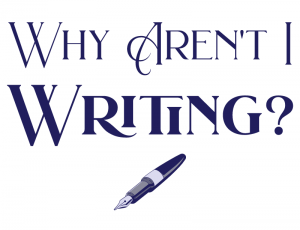Hi there,
This week, I’ve made some progress on my TV series and written another post for my other newsletter. Coincidentally, it seems like newsletters are turning into the most reliable way for authors to keep in touch with their audiences now, because social media is a dumpster fire (we kinda knew that already). Plus there’s a new prize for women’s non-fiction, a competition for playwrights and, indeed, an entire thread of opportunities!
Suw’s News: More Tag progress
I’ve made a bit of progress on Tag over the last seven days. I finished editing Episode 3 and got it up to length, having added in the much needed B and C stories. I’ve also worked out a better process for slotting in the new scenes which involves writing the episode outline, scene by scene, on a piece of paper and sticking Post-It notes everywhere. It seems so obvious in retrospect, but it’s much easier than trying to work from directly the episode grid that’s on my wall.
Now I’m on to Ep 4, which is a whole other level of terrible. It’s half the length it needs to be and, although I’ve planned out where and how I’m adding in the B and C stories, I think it’s still going to be much too short because there’s not enough A story for the full hour. At this stage, I think I’ll just do the best I can and deal with its shortness later. If I can nail some income soon, I might hire someone to do a story edit to help me smooth out the lumps.
WAIW? You don’t have to be ‘in the mood’ to write
Writing when you don’t want to can be miserable. When I was a music journalist 20+ years ago, one of my regular gigs was to turn press releases into short news items and it was one of the most boring jobs I’ve ever had.
But equally, waiting until you’re ‘in the mood’ creates unnecessary barriers and delays that can hamper your writing career, especially if you’re on deadline or if ‘the mood’ never arrives. In last week’s Why Aren’t I Writing?, I tackled the pernicious and very wrong idea that you need to be in the mood to write.
Read this: Author newsletters are where it’s at
This newsletter from Simon Owens has a couple of really interesting sections.
Firstly, newsletters are becoming more important for authors as social media channels become less and less functional and as Amazon pushes authors towards having to invest large sums of money in ads on its own platform in order to reach readers who would previously have found them through organic search.
Newsletters take a while to build, though if you use platforms like Substack or Beehive rather than mailing list tools like Mailchimp or Mailerlite, then you can build that audience much faster. Owens suggests that publishers are now more interested in authors’ newsletter subscriber base than social media numbers, which makes sense given how few views the average tweet gets (see below for more on that).
Secondly, the hype around TikTok, and BookTok in particular, is all starting to come undone as successful TikTok users push their community over to newsletters and/or YouTube as soon as engagement on TikTok goes down. TikTok might work for some people as a way to rapidly create an audience, but it’s no good for monetisation.
If you want to promote your book via a newsletter, Substack has a long post (with lots of comments) on how various authors have done just that. Worth a read if you want some ideas!
Writing women: New non-fiction Women’s Prize Trust
The new Women’s Prize for Non-Fiction is currently seeking sponsors and aims to “amplify female voices, whilst celebrating books that inform, entertain, challenge, disrupt, and offer solace and connection.”
Research has shown that women’s non-fiction writers get fewer reviews, are less likely to be shortlisted or to win book prizes, get a lower advance and are less likely to end up in ‘best of’ lists. There are also just fewer non-fiction books published by women (£). A new prize is much needed to draw attention to the amazing non-fiction written by women.
The Charlotte Aitken Trust has pledged £30,000 of prize money for the winner, for the next three years. The Women’s Prize Trust is planning to launch in time to present a winner in 2024, so if you write non-fiction, keep an eye on their Twitter feed or Facebook page.
Opportunity: Playwrights wanted
Rebound Productions are searching for original 10-15 minute plays featuring two or three characters for their spring showcase, and are particularly keen to hear from people of colour and women. Deadline is 28 February. There are no T&Cs on their site, so do your due diligence if you get through!
Tweet of the week: Writing opportunities for 2023
The Asian Writer has put together a thread list of prizes, competitions and development schemes in the UK. There’s all sorts there, including opportunities for unpublished women, people from underrepresented communities, short story writers, writers from the North, poets, Asian women, essay writers and a lot more.
Read this with a stiff drink in your hand: The enshittification of social media
Chuck Wendig has a long post cataloguing the state of social media, for authors in particular. It does not make for happy reading. Where it used to be possible to develop a decent audience on social media platforms like Twitter and, to some extent, sell books there, it’s become a lot harder in recent years.
To be fair, social media has never been the silver sales bullet that publishers wanted it to be, but you could at least reach your audience. But the main platforms’ algorithms now de-emphasise posts with links in, which is a bit of a pain if you’re trying to get people to go somewhere else to buy a book or, indeed, subscribe to a newsletter.
If you’re not depressed enough after Chuck’s post, try Cory Doctorow on for size. Always sharp and to the point, Cory explains the ‘enshittification’ of the internet and social media, and particular why the majority of your followers will never see your posts. He says:
“I have ~500k followers on Twitter and my threads used to routinely get hundreds of thousands or even millions of reads. Today, it’s hundreds, perhaps thousands.”
I have just over 7,000 followers (a number which has been steadily declining over recent months) and I’m lucky if a tweet gets 100-200 views and if a link gets 2 or 3 clicks.
What’s the answer? I don’t have proven solutions, but I do have two ideas.
1. If you want to to see someone succeed, you have to become an active promoter of their work – don’t just like a tweet, quote tweet it and say why you like it, because Twitter’s algorithm probably won’t show it to anyone otherwise. Reshare posts on Facebook and LinkedIn, etc., and tag people you think might like them. Comment. Engage. Tell the algorithms that This Stuff Is The Good Stuff.
2. Subscribe to people’s newsletters. For now at least, newsletters give us creators a direct line to you. You’ve chosen to receive this newsletter and most of the time it actually will turn up in your inbox, unlike social media posts which frequently aren’t displayed to the very people who have literally asked to see them (looking at you especially, Facebook). But more than that, have a think about someone you know who might like your favourite newsletters and suggest that they take a look.
Word of mouth is powerful and, very soon, it might be all we have left.
Obligatory cat picture
Grabbity hiding under a Maasai blanket that Kevin bought in Kenya when he was doing some work over there back in 2011.
That’s it for this week!
All the best,
Suw
{ Comments on this entry are closed }





